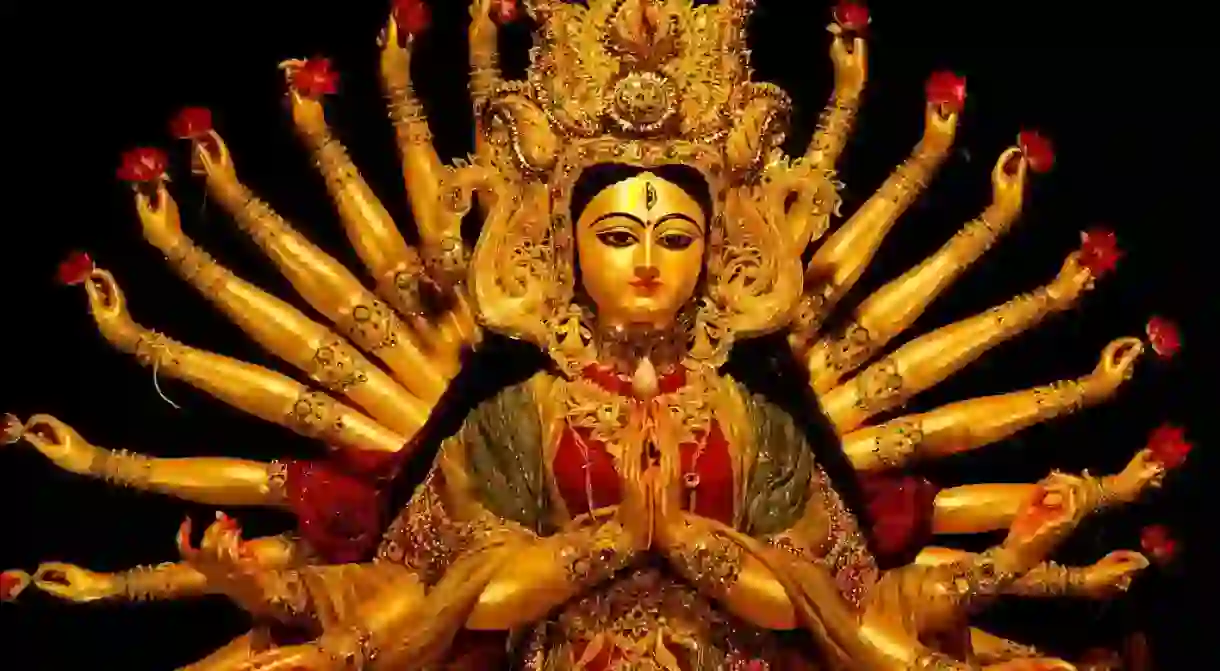What is Navaratri? Inside the Nine-Day Festival

Navaratri is a Hindu festival dedicated to Durga, the mythical mother goddess and protector of the universe. The celebration lasts nine days and is observed across many regions in India.
According to Hindu scriptures, there are four Navaratris in a year, one every season: Vasanta Navaratri in spring, Ashad Navaratri in summer, Sharad Navaratri in autumn and Magha Navaratri in winter. The most important is the Sharad Navaratri, which is observed in the Hindu month of Ashwin (September and October in the Gregorian calendar).
Like many other Indian festivals, there are several folk tales attached to the celebration of Navaratri, but what they all have in common is the triumph of good over evil. The deities associated with this festival are Durga and Ram, but other Hindu gods like Laxmi, Saraswati, Ganesha, Shiva, Kartikeya and Krishna are worshipped in different parts of the country, too.

Celebrating goddess Durga
The most famous story associated with Navaratri is the contest between the warrior goddess Durga and the buffalo demon Mahishasura, who was bestowed with a boon that made it impossible for any human to kill him. After their defeat by Mahishasura, the army of gods decided to consolidate their power into Durga, who triumphed over the fierce demon after a nine-day long battle. Navaratri celebrates this victory over evil.
Durga takes nine different forms, one for each of the nine days. Every incarnation of the goddess is associated with a colour and, although not mandatory, devotees are expected to wear a specific colour on a specific day when taking part in the festivities. The first day, for example, is associated with the colour red, which symbolises energy, and the last day with sky blue signifying the beauty of nature.
This belief is mostly prevalent in the eastern region of India, including states like West Bengal, Assam, Odisha, Jharkhand and Bihar.

The triumphant return of Ram
In the northern states of India, Navaratri is connected with the story of Ram’s victory over the demon king Ravana, who kept the god’s wife Sita hostage in Lanka. Temporary theatres are installed in various neighbourhoods over nine days, with actors enacting the Ramlila, the retelling of the life of Ram according to the ancient Hindu epic Ramayana. On the 10th day, which is celebrated as the festival of Dussehra, effigies of Ravana and his brothers Kumbhakarna and Meghanada are burnt during the festivities to signify the end of evil.
Cities like Ayodhya (believed to be the birthplace of Ram), Varanasi and Vrindavan regularly host the Ramlila. In the capital, the most famous celebration takes place at Ramlila Maidan in Old Delhi.

How Navaratri is celebrated
Navaratri is celebrated as Durga Puja in most eastern states. During this time, elaborately designed stages known as pandals, with the statue of Durga as the centrepiece, are set up in each neighbourhood. In north India, there is a 10-day fair during which the Ramlila is the main attraction. In the state of Gujarat in the west, Navaratri is one of the most important festivals. People usually fast for nine days in honour of Durga and devote all their prayers to a symbolic clay lantern, which is called garbo and is meant to represent a womb as the nucleus of all life forms. The famous garba, a spiritual dance form that originated in Gujarat, is performed during the celebrations at this time of the year.














